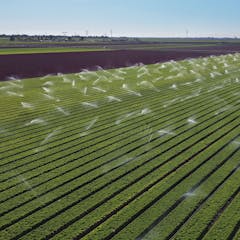
Articles on Hydropower
Displaying 1 - 20 of 79 articles

As renewable energy becomes cheaper and climate change affects water availability, the contribution of hydropower will decline.

The Federal Energy Regulatory Commission recently ruled that it won’t approve energy projects on Native lands without tribal consent. But many more applications are pending.

Mozambique has large gas reserves and a big hydropower generating dam. It exports 90% of this electricity, leaving small businesses facing frequent power cuts and disrupting their work.

Ghana’s power generation mix is still not meeting national needs.

This year, China has built renewables at a truly staggering pace. But can its tech-first approach actually cut emissions – and find common ground at COP28?

There are several risks in choosing the nuclear path – the biggest being financial.

Of all Australia’s climate policies, the Renewable Energy Target has been the most effective. Why have Australian governments moved away from it, and how can they revive it?

Our research has found 30,000 farm dams which could be used as energy storage. Solar by day, hydro by night.

There’s a consensus that extreme hydrological events will increase throughout the continent. This will lead to growing issues with power system reliability.

Economic infrastructure that affects several African countries runs through Niger.

Australia’s renewable energy transformation will require a huge amount of energy storage. We need Snowy 2.0 to succeed.

Two decades of drought have reduced the river’s flow by one-third compared to historical averages. The Biden administration is considering mandatory cuts to some states’ water allocations.

Putting a dollar value on nature has staunch opponents who say it’s morally wrong, but without it, building dams and other infrastructure can run roughshod over vital ecosystems.

Lake Powell’s existential crisis is a unique opportunity to save a treasured landscape.

If the proposed pumped hydro scheme at Onslow goes ahead and is managed well, it could be a major asset to diversify a low-carbon, self-resilient economy in Aotearoa New Zealand.

The sheer number of Chinese-funded dams pose a substantial risk to biodiversity. And yet, environmental regulation of these projects has serious flaws.

How does flowing water make electricity? An engineer explains hydroelectric generation.

The mega dam in Jinja was meant to give Uganda energy independence, but this was constrained by Britain’s agricultural interests in Egypt.

New research shows how hydropower is linked to extinctions.

China is in the midst of a devastating heatwave and drought. This has thrown the nation into an electricity crisis. And China has doubled down on coal investments to meet demand.
